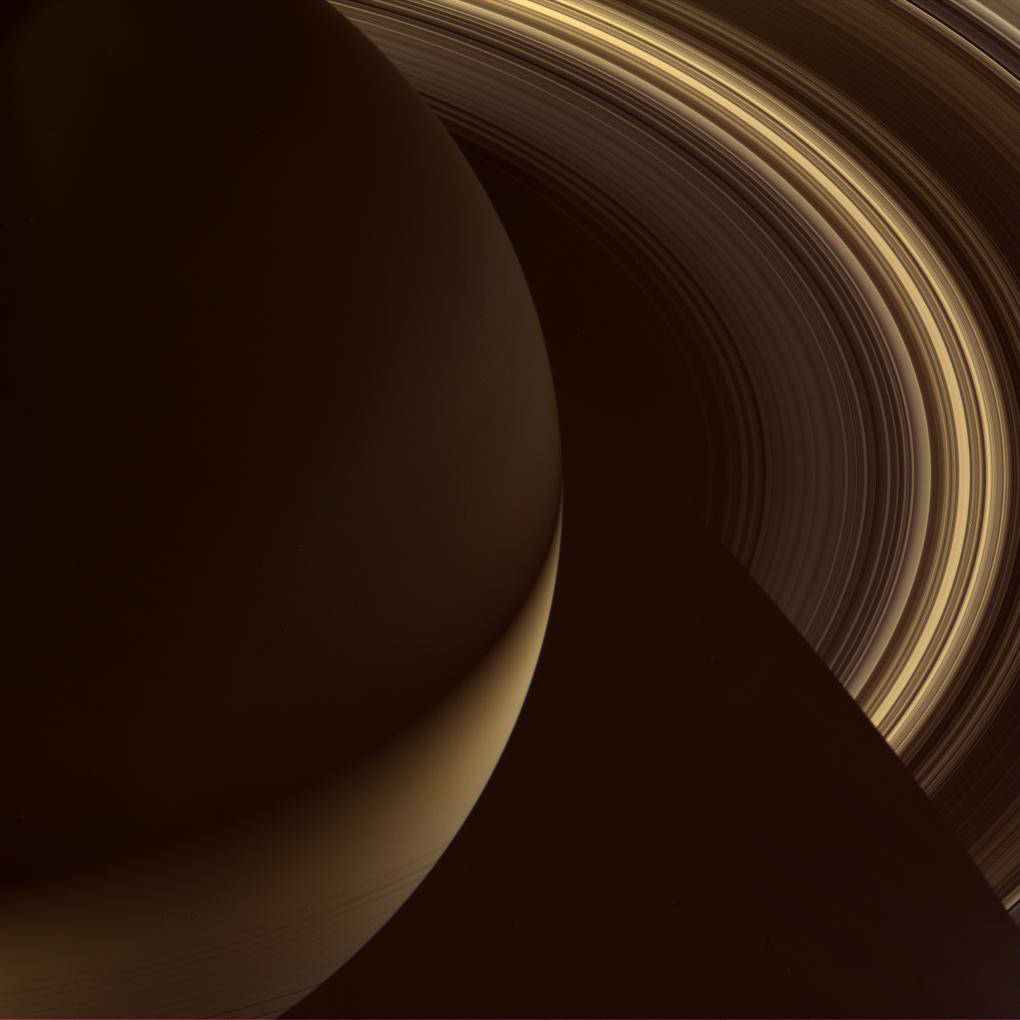
Saturn’s B and C rings shine in diffuse, scattered light as the Cassini spacecraft looks on the planet’s night side. The southern hemisphere is lit by sunlight reflecting off the rings, while the north shines much more feebly in the dim light that filters through the rings and is scattered on the northern hemisphere.
The fine, innermost rings are seen silhouetted against the southern hemisphere of the planet before partially disappearing into shadow.
The color of the rings appears more golden because of the increased scattering in the rings brought about by the high phase angle and the view being toward rings’ the unlit side. Saturn also looks more golden because of the high phase angle here.
Images taken using red, green and blue spectral filters were combined to create this natural color view. The images were obtained by the Cassini spacecraft wide-angle camera on Sept. 28, 2006 at a distance of approximately 1.4 million kilometers (900,000 miles) from Saturn and at a Sun-Saturn-spacecraft, or phase, angle of 151 degrees. Image scale is 83 kilometers (51 miles) per pixel.Image credit: NASA/JPL/Space Science Institute




























